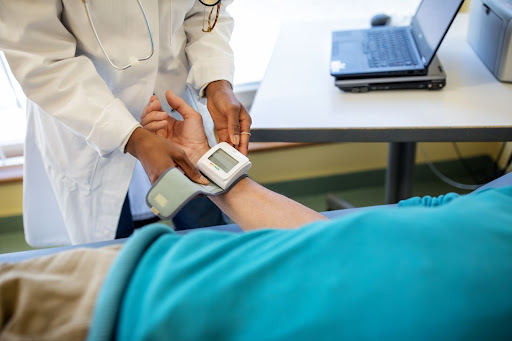Home health monitoring devices allow health providers to monitor, report efficiently, and analyze patients’ health conditions remotely. They will enable a patient to provide their progress health-wise without the need for hospital visits, invasive procedures, and needles.
For the patient, these health gadgets enable a person to devise a health plan based on their health. That means you can see your improvements health-wise.
Home health monitoring gadgets save on costs, energy, and time. But they have their limitations too. In this article, we look at both the benefits and limitations of using home health monitoring devices.
What are the benefits of using home health monitoring devices?
Do you only visit your doctor when you have an extreme case? In most cases, yes, and it’s pretty understandable since we live in a hectic world.
Sometimes the on and off pains you may be getting in your body could signal that you need immediate health care. Regular doctor appointments can help you quickly identify a health issue before it worsens.
You can also consult a trusted team like CareMate regarding the benefits of home health monitoring devices. Here are more benefits of using a home health monitoring device.
1. Improved quality of Healthcare
The devices connect the patient and the clinician virtually with real-time patient data. That means that the clinician will have a more straightforward routine and limits the possibility of burnout. In the end, the clinician can provide better health care quality.
2. Assurance
Think of that cardiac arrest patient at the hospital monitoring their heartbeat every second; it’s pretty scary, right? A home health monitoring device helps such a patient to monitor their heart rate in the comfort of their home. It is like taking their healthcare team at home.
The devices provide an invaluable assurance that a professional is watching out for them while they are comfortable at home.
3. Education
If a patient uses an advanced device that provides real-time feedback when they submit information, the devices will eventually educate the patients on their health. For instance, if patients are required to follow daily instructions, the devices will subsequently educate them on vital health aspects.
As days go by, the patient will know what is needed at what time and how they can do it without a third party’s help – in the case of taking drugs.
4. Cost-effective
Regular hospital visits are costly – consider the commuter costs for the patient or caregiver. With these devices, there is a limitation to unnecessary hospital admissions and possible readmissions. The limit subsequently reduces or cuts off the cost.
5. Improves the lifestyle of a patient
If a chronic illness patient spends most of their time in the hospital, they may have an impoverished social lifestyle. But with these devices, they can spend time with family and friends. The devices can also tell the patient when their health is taking a severely lousy shape and when they need an emergency health care service.
The devices also positively affect the quality of life one lives. For example, these devices, especially the wearables, can tell you when to drink water, exercise, and take drugs, and they may educate patients on the best foods.
What are the Limitations of Using Home Health Monitoring devices?

Like anything else under the sun, these home health monitoring devices are not flawless; they have limitations too. Here are some limitations you can expect when using the devices;
1. Depends on the individual willingness
If a patient is unwilling or lacks the motivation to manage their health, the devices may not work for them; they require someone willing to provide their health data regularly. Also, if the caregiver is unwilling to keep checking on their patient’s data on the device, they may not be in a suitable position to administer proper health care services to the patient.
2. Inaccessible to everyone
The devices require excellent broadband connectivity, and not everyone can access that. Small institutions or the ones in rural settings cannot access this system. Not everyone uses smartphones, and not everyone can use digital devices well. As in the case of an elderly patient, they find it difficult to use such devices.
3. May be unreliable
Gadgets fail, and health monitoring gadgets are no exception. Fitness wearables, for instance, may have countless error records. Some chronic health assessment tools may also fail to administer, record, or detect crucial aspects of a patient’s health. Inaccuracy is a very sensitive issue that must be addressed before the devices can be used.
Home health monitoring using devices is great for both patients and caregivers. It reduces costs, enhances efficiency, and improves the overall life of a patient. It is also cost-effective for both parties. The main drawback is the imprecision of the devices. As long as the possibility of imprecision is found, the effectiveness of these devices is not guaranteed.


